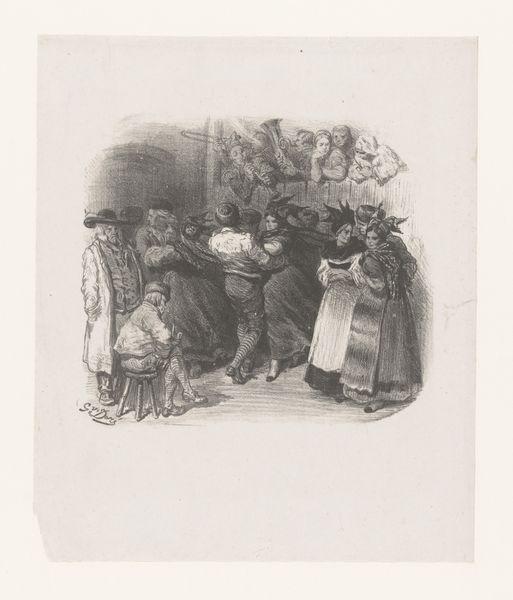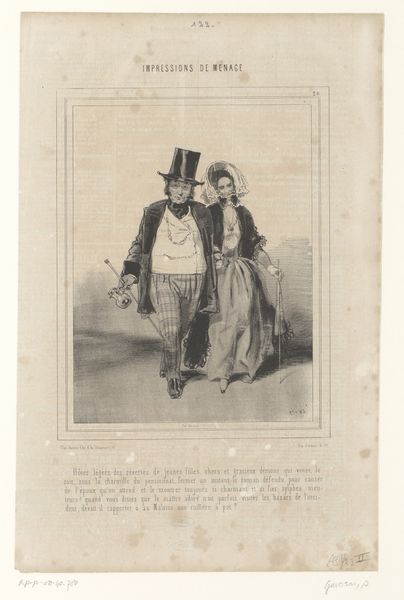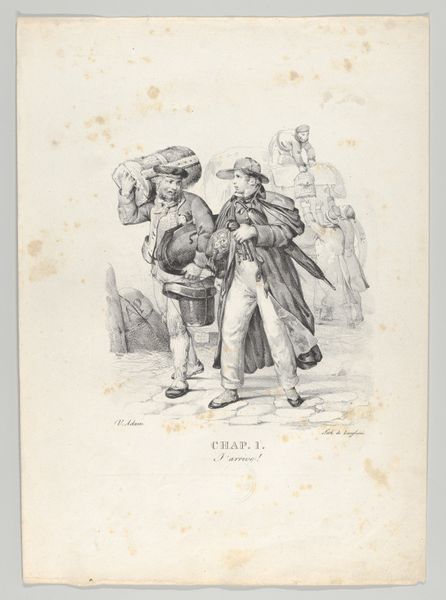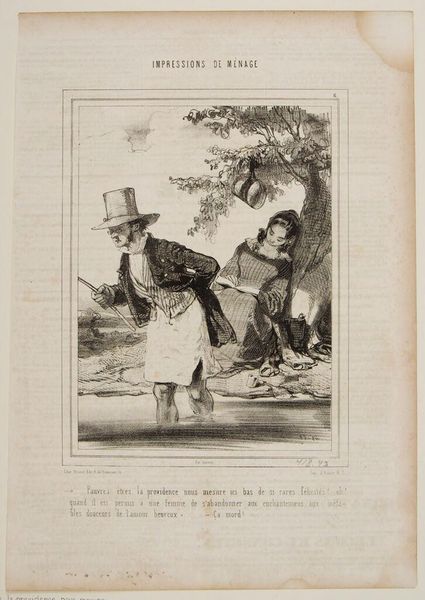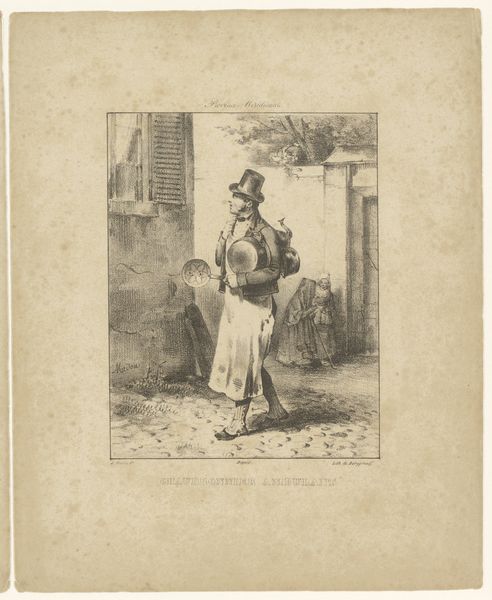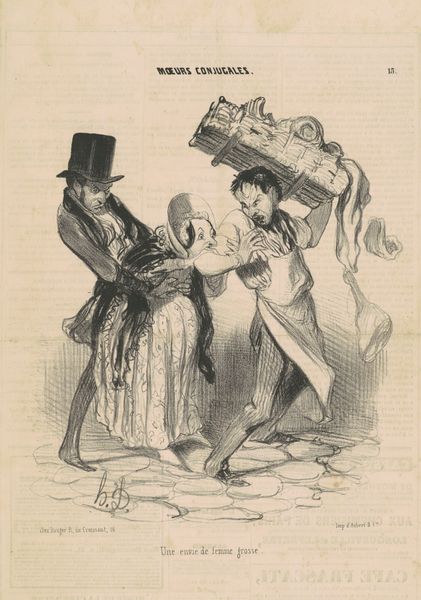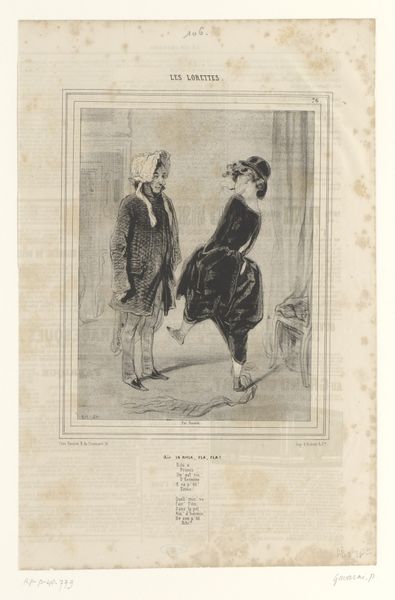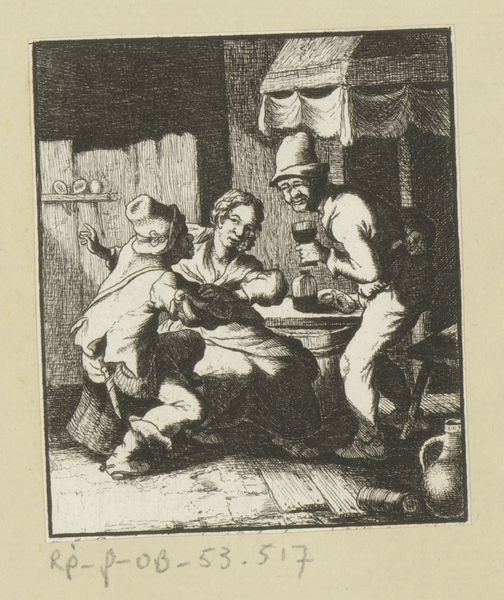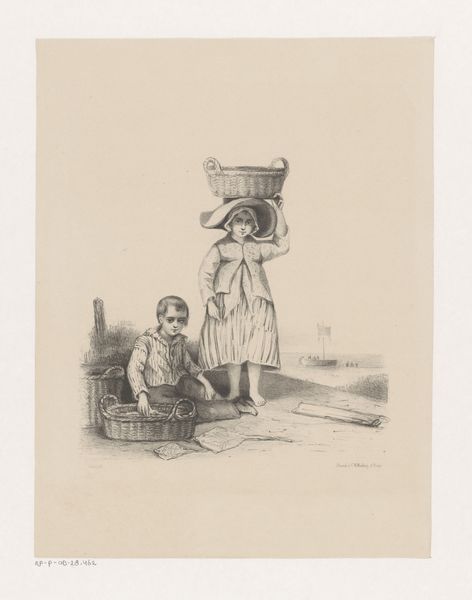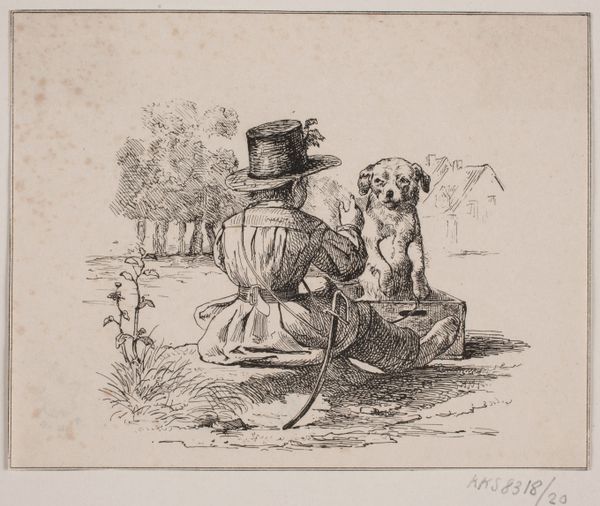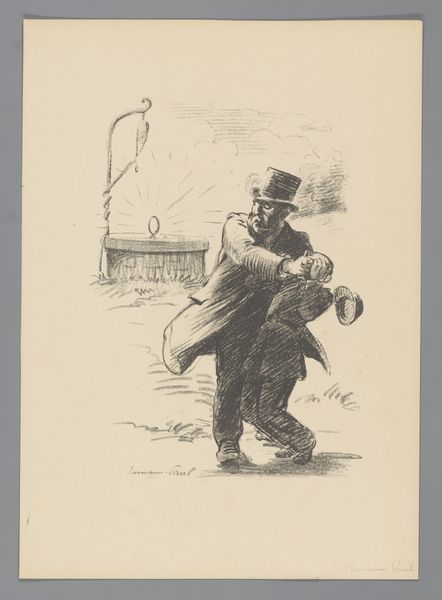
print, etching, engraving
#
narrative-art
# print
#
etching
#
caricature
#
old engraving style
#
figuration
#
romanticism
#
line
#
genre-painting
#
engraving
Dimensions: height 291 mm, width 185 mm
Copyright: Rijks Museum: Open Domain
Curator: Paul Gavarni created this etching and engraving titled "Echtpaar verpoost aan de oever van een beek," which translates to "Couple resting on the bank of a stream," in 1843. It resides here at the Rijksmuseum. Editor: My first impression is one of irony, a sense of dissonance. The scene presents a picturesque moment, but something feels subtly off, a hint of societal critique perhaps. Curator: The era certainly plays a role. The artwork's Romanticism style often romanticizes nature, and simultaneously, there is tension embedded in it that stems from the era's rapidly shifting social landscape. Gavarni often engaged with contemporary issues through caricature. How does the imagery speak to you? Editor: Visually, the figures themselves present conflicting signals. The woman leans against a tree, relaxed and seemingly lost in thought, maybe melancholic given how this posture has been encoded with centuries of visual symbolism that portray abandonment, sadness, but also dreaming or artistic vision. The man, wading through the stream in his formal attire, seems completely out of place. Curator: Indeed. The contrast is key. The man's struggle, contrasted with the woman's repose, hints at the power dynamics at play, suggesting perhaps that his efforts afford her leisure. The choice of setting – a stream – introduces elements of purification but also risk, and potential disruption. This relates to the theme of genre-painting by emphasizing domestic life of that period. Editor: Right, there’s almost a performative aspect to his labor. The top hat especially seems almost like a comedic or satiric element when placed in that situation. It’s as if the man is staging his social persona for public approval while the woman seeks private mental escape. How does that tension function to engage and even critique notions of marriage and gender during the time of production? Curator: A question of what exactly the work performs and portrays! That’s the crucial critical intervention. Gavarni's caricature invites us to reflect on the artificiality of social roles and the burdens they place, particularly on men in upholding a certain image of success and on women who are constrained from fulfilling individual aspirations because they must stay home. What remains, do you think, from the 19th century society this caricature lampoons so elegantly? Editor: The enduring nature of performance, I think. The ways individuals are shaped by expectations and external norms, but also seek spaces of freedom whether in quiet, subtle, intimate rebellion, or through dramatic breaks, depending on where you fall on the ladder of privilege. This piece continues to ask important questions about class, work and expectations even for viewers today. Curator: It seems "Couple Resting on the Bank of a Stream" really captures both the romantic and harsh realities of relationships under social constraints. Thank you. Editor: Thank you. It's those layers, both the literal visual layers and conceptual frameworks embedded in an image, that make encountering such a complex artwork so rewarding.
Comments
No comments
Be the first to comment and join the conversation on the ultimate creative platform.
